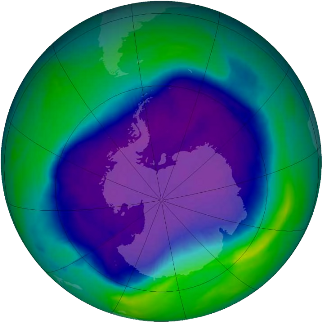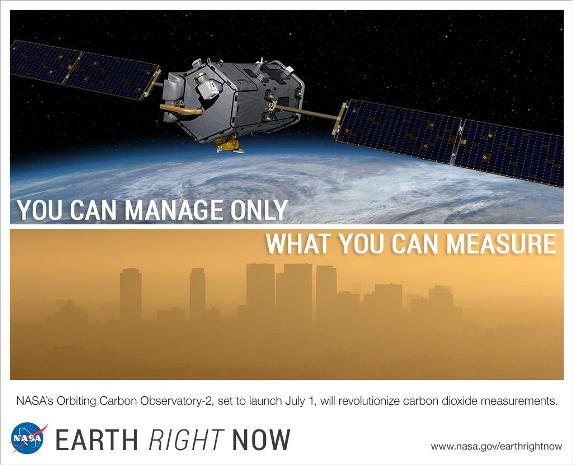File:NASA-aerosol-earth.png: Difference between revisions
Siterunner (talk | contribs) No edit summary |
Siterunner (talk | contribs) No edit summary |
||
| Line 49: | Line 49: | ||
[[File:You can manage only what you can measure Dr David Crisp, OCO-2, June 2014 m.jpg]] | [[File:You can manage only what you can measure Dr David Crisp, OCO-2, June 2014 m.jpg]] | ||
''By September 2009, 196 parties had signed the Montreal Protocol, making it the first treaty of any kind to achieve universal ratification. All the world’s governments are now legally obligated to phase out ozone depleting substances (ODSs) under the schedules defined by the Protocol.'' | |||
<big><big>'''''On the 25th Anniversary of the Montreal Protocol'''''</big></big> | |||
'''''We’re already much better off for cutting ozone-destroying CFCs''''' | |||
'''''September 2012''''' | |||
[http://theconversation.com/saving-the-ozone-layer-why-the-montreal-protocol-worked-9249 ''Saving the ozone layer: why the Montreal Protocol worked''] | |||
''The Montreal Protocol is one of the most successful and effective environmental treaties ever negotiated and implemented. No single factor led to its success. But if an overarching reason is needed, look no further than the unprecedented level of cooperation and commitment shown by the international community.'' | |||
<big>'''''On the 30th Anniversary of the Montreal Protocol'''''</big> | |||
'''''September 2017''''' | |||
[https://news.nationalgeographic.com/2017/09/montreal-protocol-ozone-treaty-30-climate-change-hcfs-hfcs/ ''Without the Ozone Treaty You’d Get Sunburned in 5 Minutes''] | |||
''Turning 30 this month, the Montreal Protocol was a landmark environmental success that serves as a model for addressing other problems, although it also has some unfinished business.'' | |||
○ | |||
Revision as of 17:56, 19 November 2018
<addthis />
Atmospheric Particulates
- August 23, 2018
Heatwaves, hurricanes and other extreme weather events might be the "face of climate change," but they are not the only signs.
A grim new visualization from NASA shows another problem caused indirectly by global warming: airborne particles and droplets. These "aerosols," shown on a single day on August 23rd, come from dust, volcanic ash and other sources. They're particularly brutal this year because of fires in California, British Columbia and the southern part of Africa...
○
Welcome the First International Environmental Treaty'
The 1987 Montreal Protocol is commonly cited as a success story at international level. The aim of the agreement was to limit the release of Chlorofluorocarbon (CFC) aerosols into the atmosphere and subsequently halt the depletion of Ozone (O3) in the stratosphere.
There were a number of factors that contributed to Montreal’s success, these included:
- The problem and solution were both clearly defined and supported by industry (albeit not initially);
- The Ozone hole was easily measurable;
- There was an effective scientific lobbying alliance that played a key role in convincing the US Government and the commercial sector (in particular DuPont, then one of the largest manufacturers of CFCs).
The aim of the Montreal Protocol has been to eliminate the source of CFC emissions, as a result the only really feasible way for a state to achieve this would be through a ban on substances related to Ozone depletion.
How bad would the ozone hole be if we did nothing?
Monitoring and measuring over the years since the passage of the Montreal Protocol demonstrates the successful implementation, and model, of international cooperation.
By September 2009, 196 parties had signed the Montreal Protocol, making it the first treaty of any kind to achieve universal ratification. All the world’s governments are now legally obligated to phase out ozone depleting substances (ODSs) under the schedules defined by the Protocol.
On the 25th Anniversary of the Montreal Protocol
We’re already much better off for cutting ozone-destroying CFCs
September 2012
Saving the ozone layer: why the Montreal Protocol worked
The Montreal Protocol is one of the most successful and effective environmental treaties ever negotiated and implemented. No single factor led to its success. But if an overarching reason is needed, look no further than the unprecedented level of cooperation and commitment shown by the international community.
On the 30th Anniversary of the Montreal Protocol
September 2017
Without the Ozone Treaty You’d Get Sunburned in 5 Minutes
Turning 30 this month, the Montreal Protocol was a landmark environmental success that serves as a model for addressing other problems, although it also has some unfinished business.
○
File history
Click on a date/time to view the file as it appeared at that time.
| Date/Time | Thumbnail | Dimensions | User | Comment | |
|---|---|---|---|---|---|
| current | 15:13, 28 August 2018 |  | 800 × 411 (443 KB) | Siterunner (talk | contribs) |
You cannot overwrite this file.
File usage
The following page uses this file:

